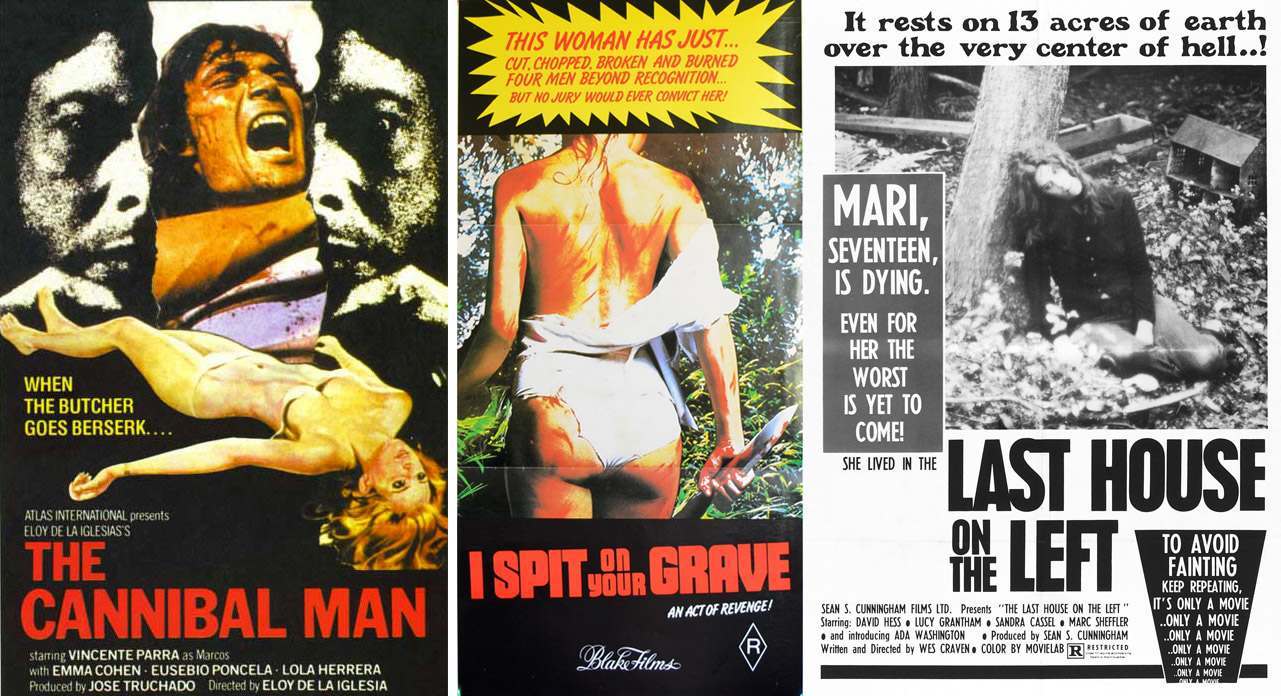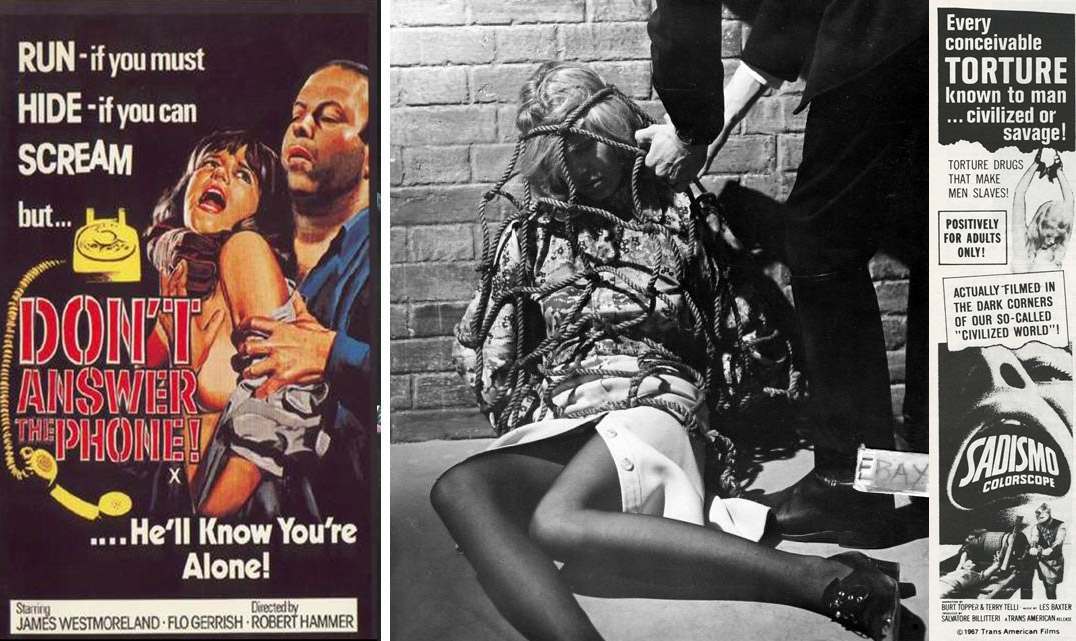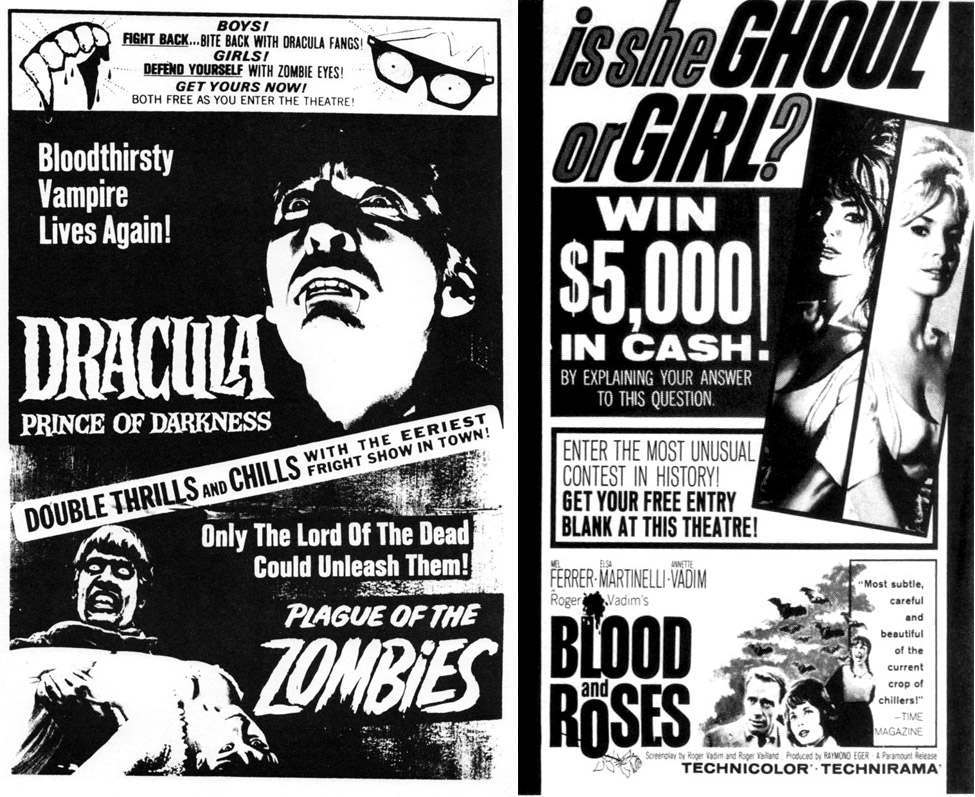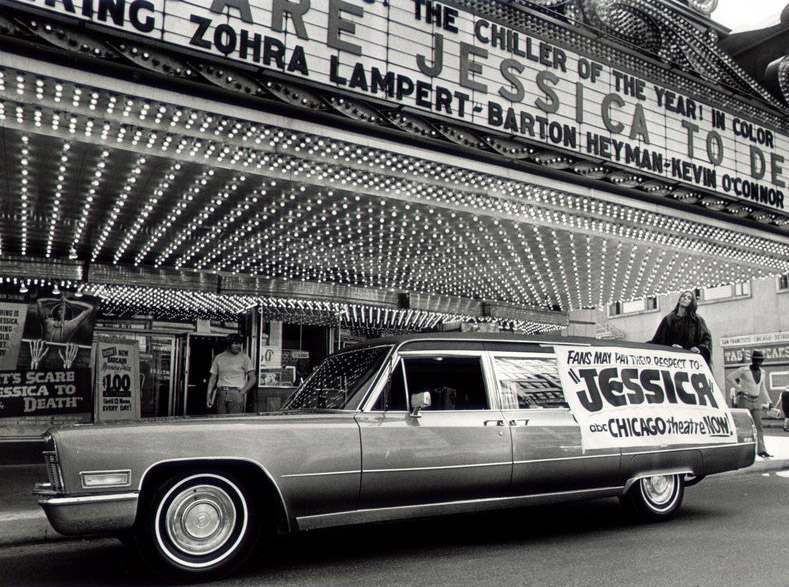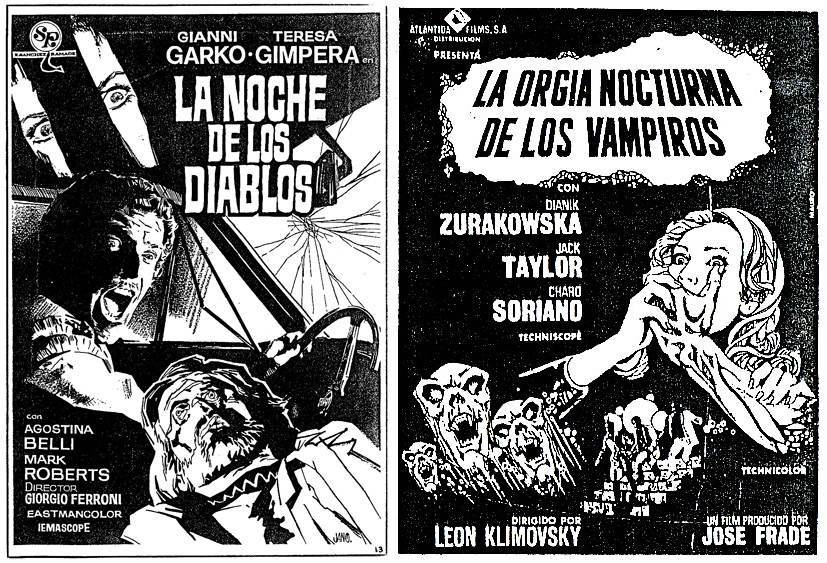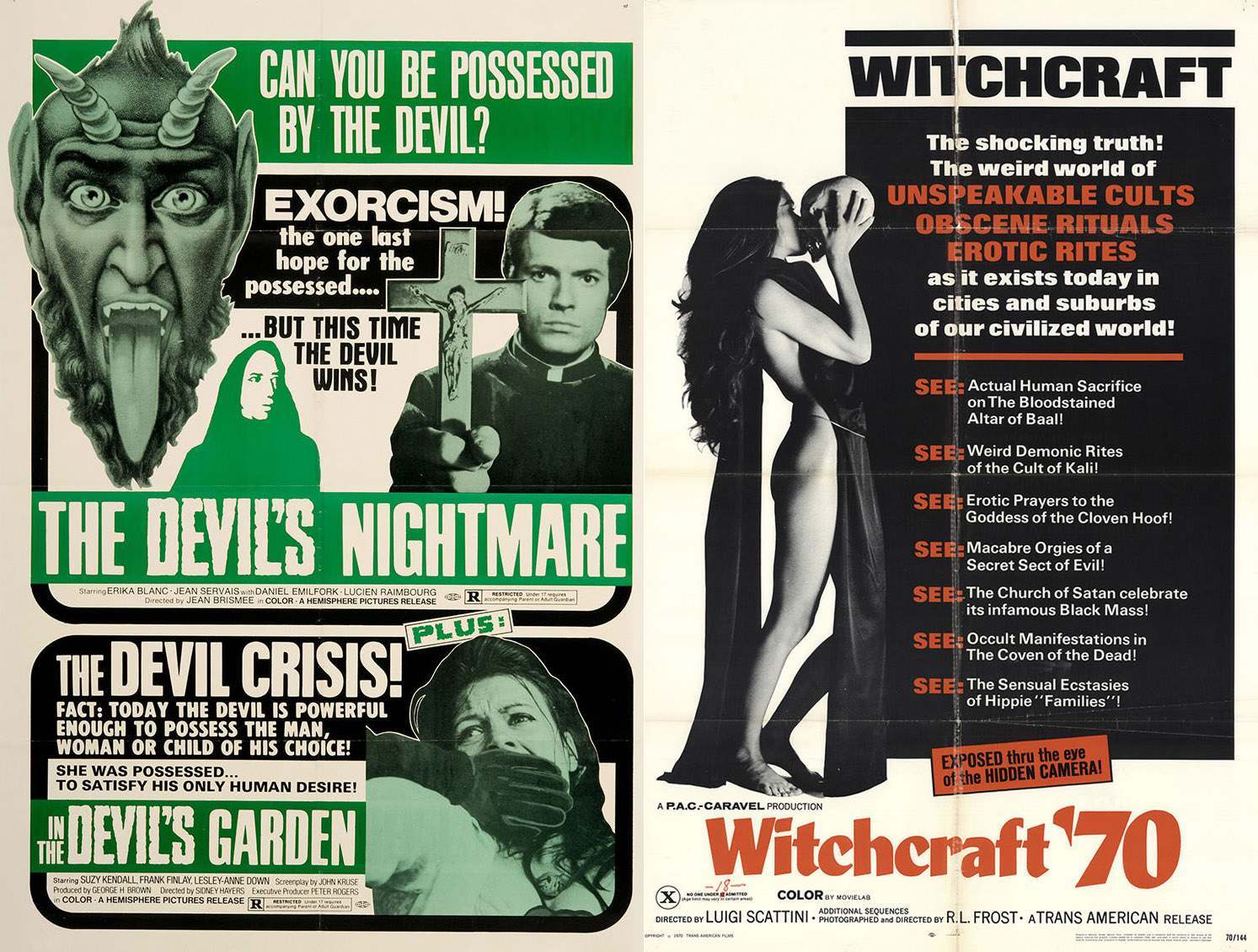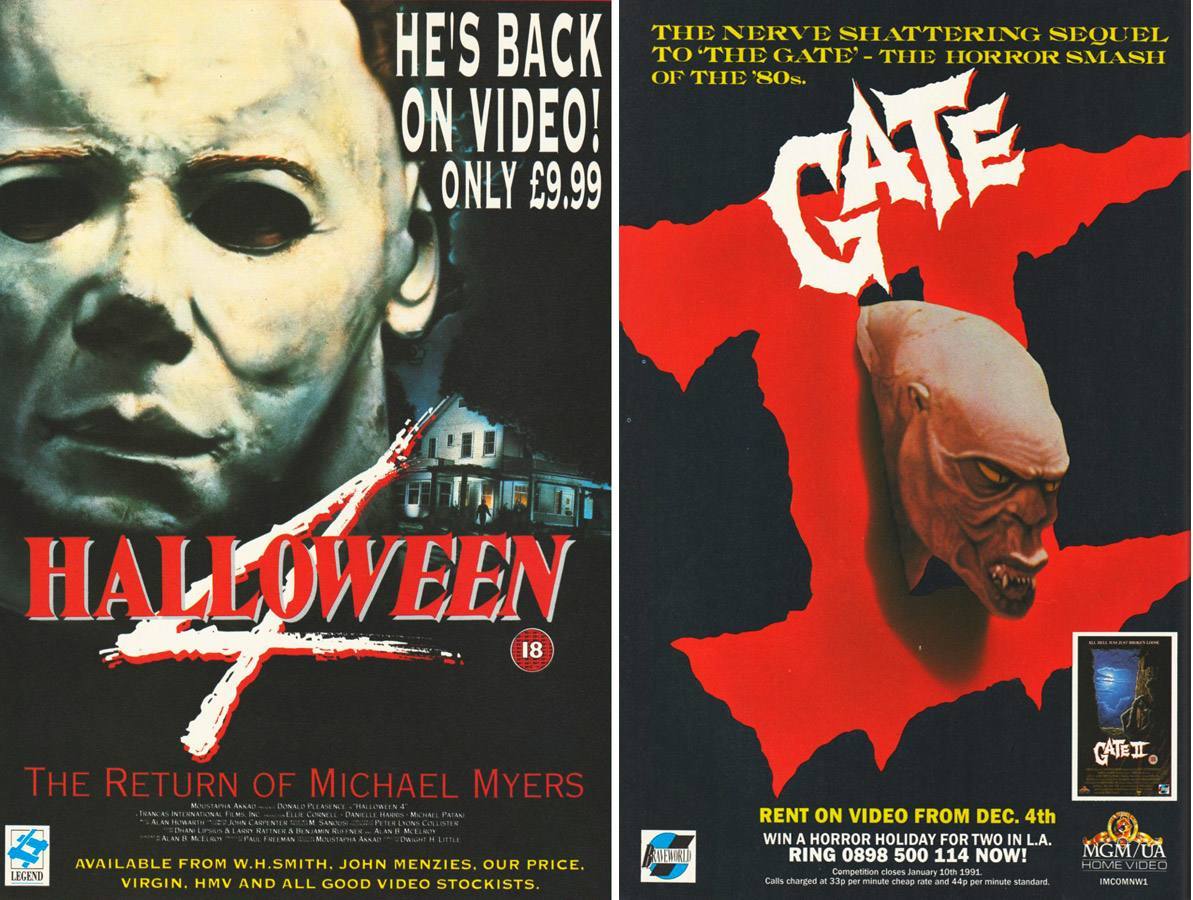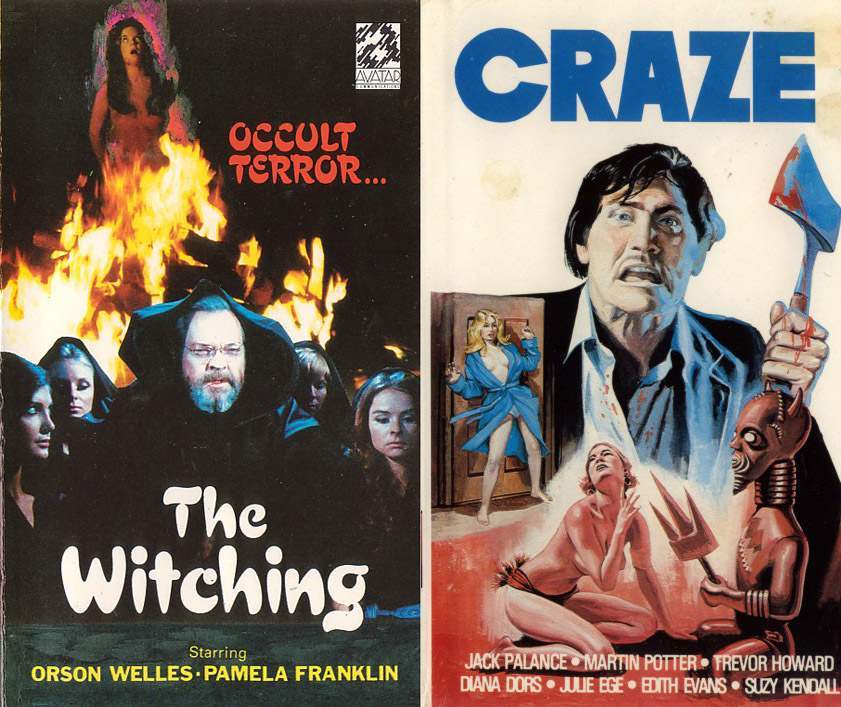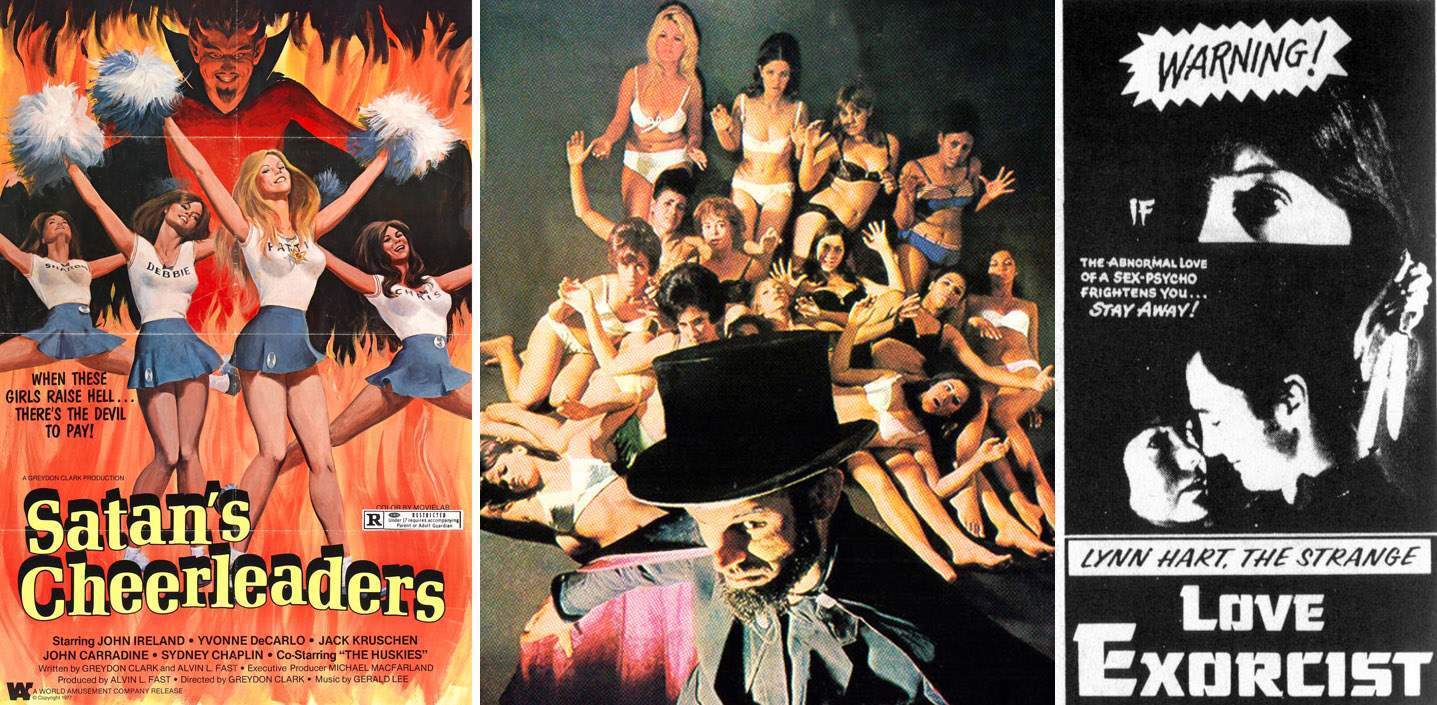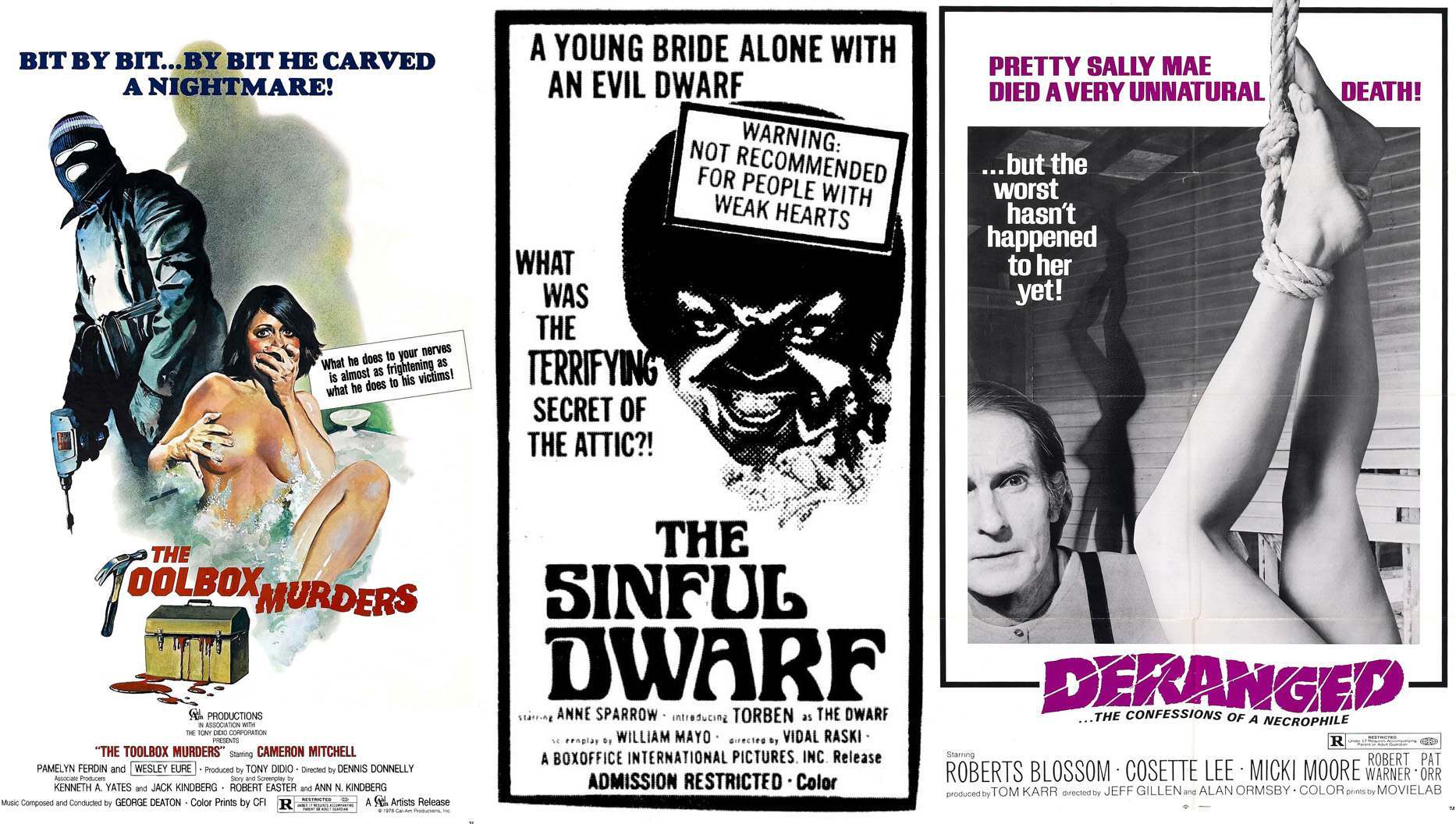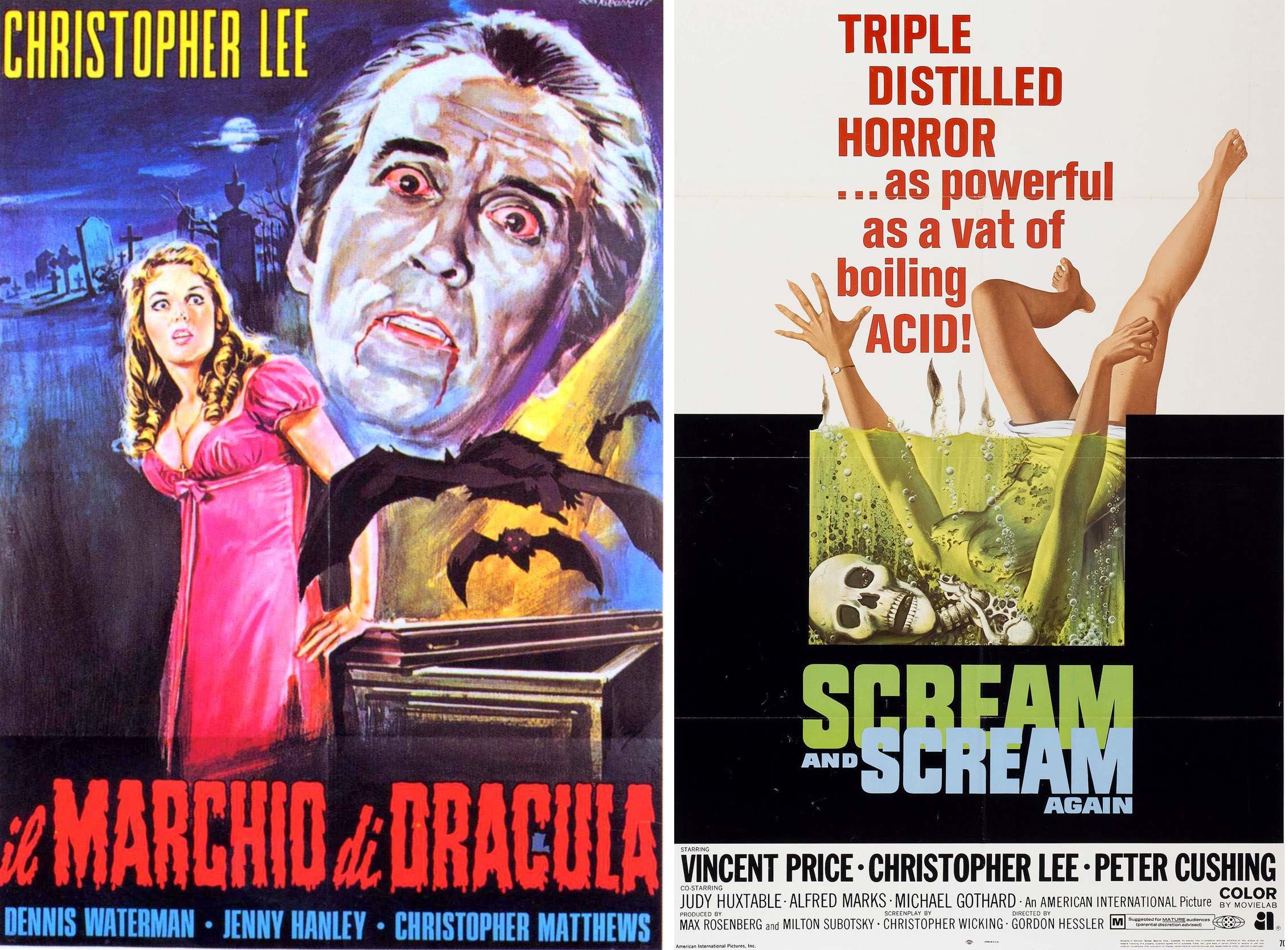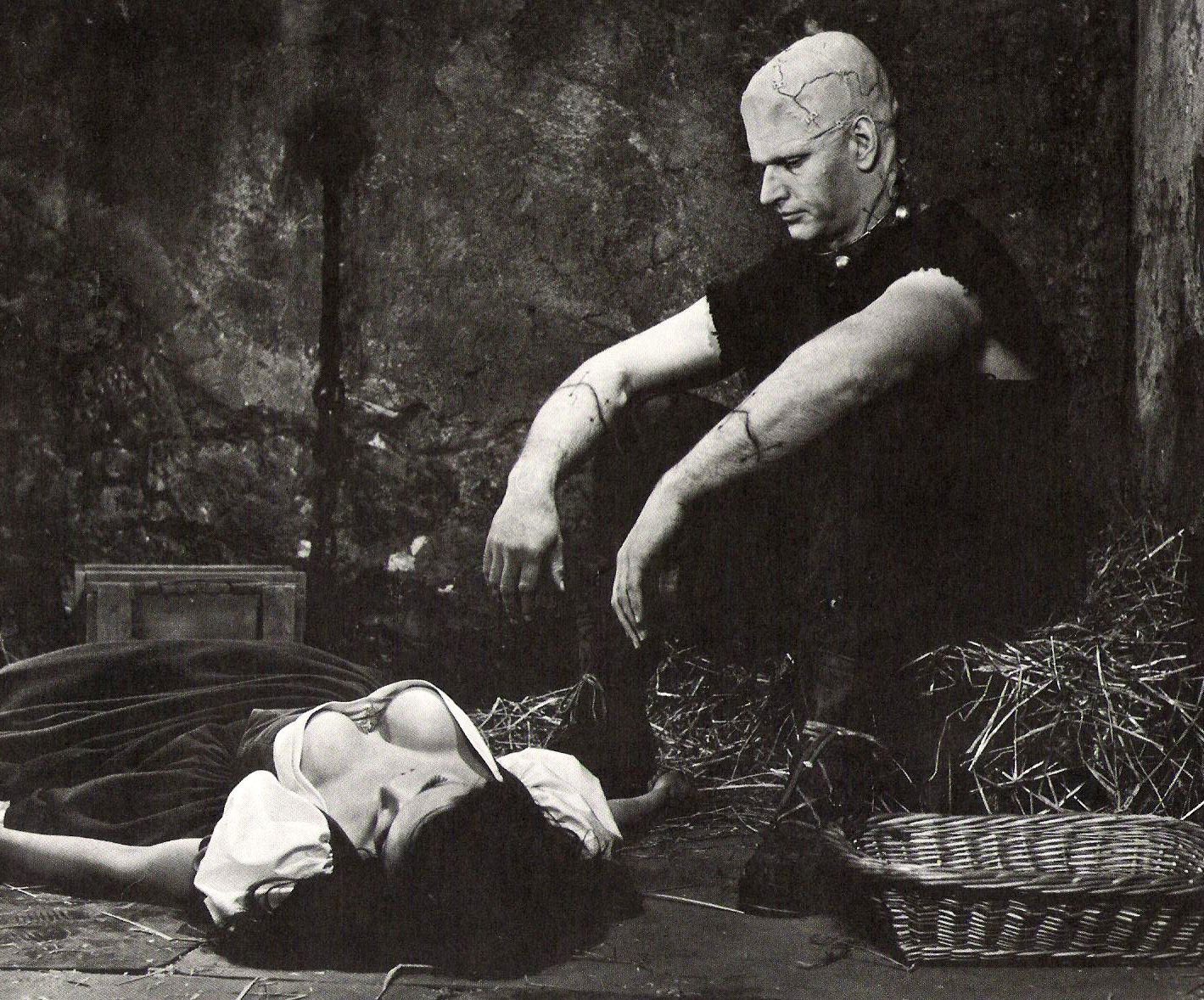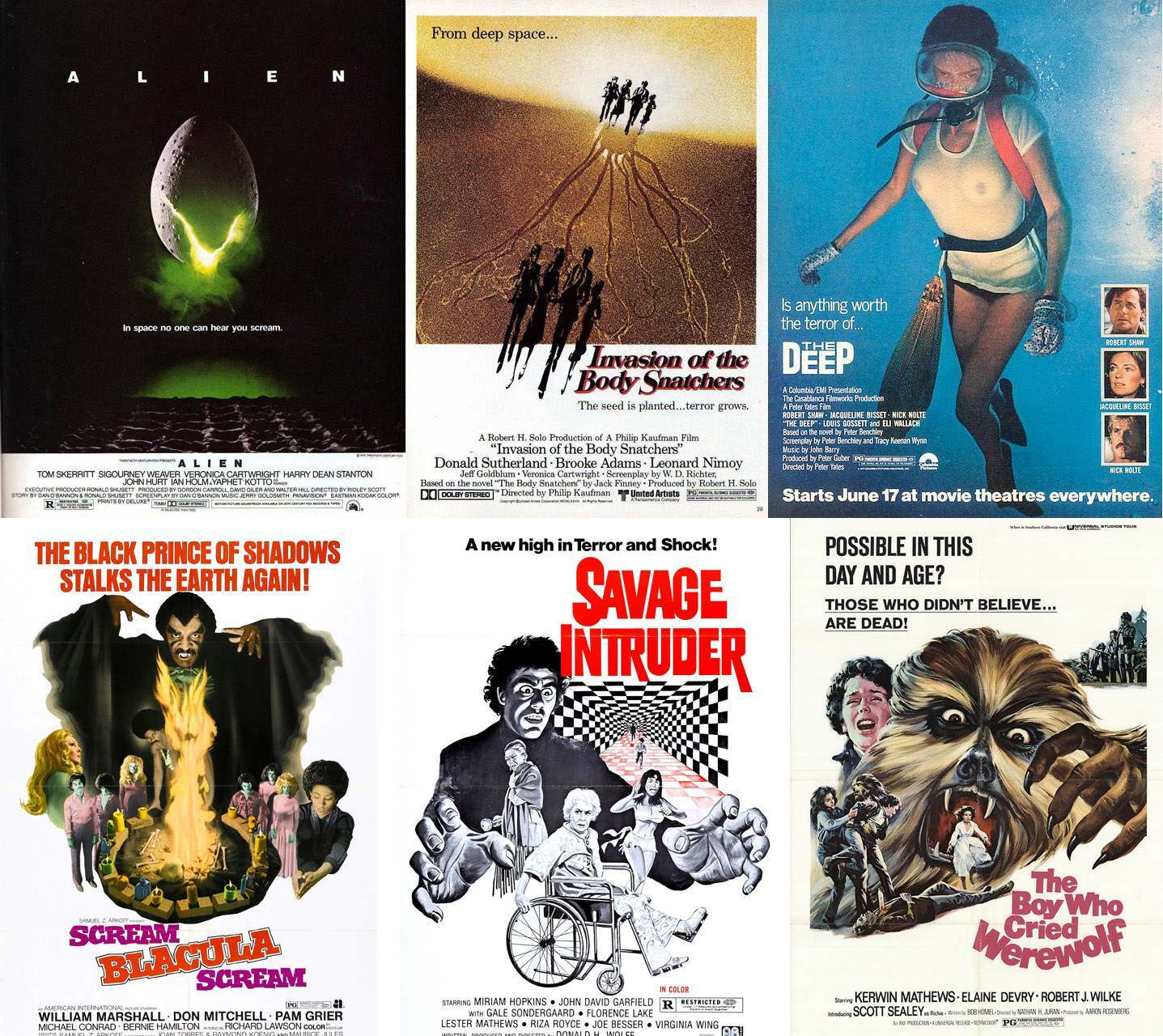This list of reasons why horror flicks of the 1970s were better than anything since ultimately is just one man’s opinion – an often grouchy and biased man at that. So, why take the time to read this list, or even compile it in the first place? Because there are many of you out there who haven’t experienced the wondrous (and often disturbing) world of 70s horror, and perhaps this list will open your mind up, and incite you to give it a try….. But be forewarned; 70s horror is so damn groovy, you may develop a lifelong addiction to its horrific charm.
To those of you who already recognize the 70s as the Golden Age of Horror, I invite you to read the list, then add your own – after all, 15 reasons isn’t near enough.
A couple notes before we begin: (1) This isn’t a list trashing modern horror – there’s been tons of good stuff released in recent years. I’m simply explaining why 70s horror is the best – not attempting to argue that all other decades are shit. (2) Seventies style horror didn’t end on December 31st, 1979 – the flame was kept alive for at least a few years into the 1980s.
1. The Grit
To be truly horrifying, it’s nice to have a degree of grittiness. Polished horror films rarely horrify – they’re just too clean looking to attack you on a visceral level. For whatever reason, horror films of the 70s often looked like they had been marinated in a puddle on a gas station bathroom floor (a description I’ve used before, but I can’t think of a better way to describe it). Last House on the Left, for instance, almost looks like a snuff film at times, as does I Spit on Your Grave and The Texas Chainsaw Massacre. Modern horror has tried to recreate this grittiness, and while guys like Rob Zombie have given it a valiant effort, you just synthesize the magic that was the genuine grime of 70s horror.
2. What’s a Taboo?
Once we entered the age of political correctness, certain things just became off-limits. This is probably a good thing for society – we could do with a lot less rape, child killing and graphic misogyny in our films. Yet, there’s something about entering that dark tunnel, where nothing is ever too horrible, and anything can happen, no matter how wrong and irresponsible. Sure, there’s been some deviant examples of late (A Serbian Film being the worst offender), but in the 70s it felt like every horror film was that dark tunnel.
3. Promotional Gimmicks
In the 1970s you still had the promotional gimmick holdovers from previous decades: barf bags and disclaimers signed in the lobby, wild claims made on movie posters, etc. It was all very cheesy, but also a lot of fun.
4. No Straight to Video
These films were made the theater. So, even though their budgets were often smaller than theatrical releases of today, they weren’t as miniscule as the straight-to-video dregs of today either. This created a sort-of perfect balance between the over-polished, over-blown big budget blockbuster and the Z-grade straight-to-video/ straight-to-streaming garbage.
5. Euro-Horror
During the 70s, there was a huge influx of European films (often repackaged for oblivious US audiences). And so, we were treated to the stylish giallo horrors of Mario Bava (who Tim Burton has spent a career imitating) and Argento, the nihilistic perversions of Jesus Franco, the avant-garde and surreal horrors of Jean Rollin, the zombies of Fulci, and a host of other boundary-smashing directors, each with their own style. It really made the landscape of horror cinema incredibly diverse – always a good thing.
6. Occult-Gone-Wild
People were gaga for the occult in the 70s. Perhaps it was just the after-effect of Rosemary’s Baby and The Exorcist, or perhaps it had deeper roots in Boomers’ question of religion and their own mortality at a time of war and nuclear annihilation. Whatever the reason, satanic stories were the name of the game for a lot of horror cinema much of the decade. Was it a good thing? If it had been cheesy or Xeroxed (like the many possession films of today), it would’ve been bad. However, the interest in the dark side was genuine in the 70s, and the specter of Lucifer lurking in the shadows made things all the more horrifying. From The Omen to The Sentinel, from Escalofrio to Alucarda, satanic horror has never been so good… er, I mean evil.
7. Slow Burn Horror
I hate the term “slow burn”; it’s as if movies without nonstop action or scares are an anomaly deserving a special name. Horror movies of the 1970s were designed for adults not teenagers with attention spans of tree shrews. Watch the Donald Sutherland horror flick Don’t Look Now (1973) or George C. Scott’s The Changeling – these are, by today’s standards, insanely slow moving with long breaks between scares – but the payoffs are more than worth it. So, while Texas Chainsaw was relentless, you also had a wonderful mix of horror film offerings which kept a less than frantic pace.
8. A Sequel-Free World
It wasn’t until the slasher films of the 1980s arrived that horror cinema became sequel crazy. While Halloween II and Damien: Omen II were welcome sequels, it was nice to have the span of a decade basically consisting of original concepts devoid of “Part Twos”. It’s true that all movies borrow from a predecessor, regardless of whether it’s a sequel; however, the sequel shtick can get wearisome – I mean, did we really need a Nightmare on Elm Street Part 5 or a Phantasm IV? Plus, the sequels were more often than not, woefully unworthy additions (ex. Exorcist II: The Heretic, the laughable Howling sequel and the Texas Chainsaw sequel comedy (?)).
9. A Remake-Free World
Even more diabolical than the sequel-craze is the remake-craze, which has taken unoriginality to new lows. We’ve seen the remakes of Carrie, Friday the 13th, Halloween, The Wicker Man, Texas Chainsaw, My Bloody Valentine, Psycho, Last House on the Left,.. the list goes on and on. The films get a slicker more polished look, and usually they get the neutered PG-13 treatment as well. It’s a disease that must be stopped.
10. Celebs ‘n’ Horror
Because horror films were so popular and accepted in the 1970s, it was okay for relatively big name actors and actresses to star in them. Only recently has it started to become somewhat acceptable again (ex. Brad Pitt in World War Z). In the 70s you had Gregory Peck digging up jackals, Donald Sutherland attacked by pod people, Richard Dreyfus hunting a giant shark, Shirley MacLean in an exorcism, Charlton Heston fighting zombie hordes and Oliver Reed and Bette Davis taking residence in a haunted house. On the one hand, it’s a bad thing – it can turn horror movies into The Love Boat or Hollywood Squares. On the other, it wasn’t the case with most horror movies, so it was nice, on occasion, to have Hollywood acceptance rather than hatred for a change.
11. Nudity Aplenty
Don’t ask me why, but nudity and horror movies go together well, and at no other time in cinema history was nudity more plentiful than the 1970s. Just try and find a horror film from that decade without it. The censorship boards were asleep at the wheel and the Sexual Revolution was in full swing – you just never knew when nudity was going to strike; but it wasn’t a matter of “if”, it was a matter of “when”.
12. Nihilism-A-Go Go
I like to think of myself as a pretty optimistic guy – I certainly wouldn’t call myself nihilistic. That being said, when you want a horror movie to punch you in the gut, disturb you, repulse you, and take you on a rollercoaster ride of horror and despair, the nihilistic 70s are just what the doctor ordered. This generation, full of existential pain from Vietnam, the Cold War and a world upended from the halcyon days of Leave It to Beaver, had a pretty grim view which translated well to the horror genre. The 80s delivered light-hearted cheese to be gobbled up like cotton candy; whereas, the 70s delivered heavy-handed portraits of the abyss to leave you scared and alone.
13. Bite Size Nuggets of Horror
In the 1980s we had Creepshow, and recently we’ve seen the VHS movies bring the genre back somewhat; however, it still pales in comparison to the plethora of anthologies that graced theaters in the 70s. Amicus pictures led the pack with quality kick ass offerings, but there were plenty of others [Tales That Witness Madness (1973), The Uncanny (1977), Dead of Night (1977), Trilogy of Terror (1975), Tales from the Crypt (1972), etc.].
14. Horror Britannia
Nobody does Gothic like the Brits and the horror genre is sorely lacking without strong UK offerings. Most would say that Hammer had seen its day by the 1970s; but I’d argue there was plenty to love in the early part of the decade. For instance, Twins of Evil – the best breasts-n-blood film ever made – came out in 1971. There were a number of English gems released in the 70s [The Dunwich Horror (1970), Scars of Dracula (1970), Taste the Blood of Dracula (1970), The Vampire Lovers (1970), Lust for a Vampire (1971), The House That Dripped Blood (1971), The Devils (1971), The Blood on Satan’s Claw (1971), The Wicker Man (1973), The Satanic Rites of Dracula (1973)] and the horror cinema landscape was the better for it….. and let’s not forget those bodice popping Hammer Horror Babes….
15. Horror Smorgasbord
Perhaps the greatest attribute of 70s horror was the buffet of choices. Since the genre experienced such popularity during the decade, naturally, you had plentiful offerings – and, as I’ve explained, all bursting with originality and creativity. To name just a few examples to demonstrate this embarrassment of riches: Occult Horror (The Exorcist, The Omen), Sci-Fi Horror (Invasion of the Body Snatchers, Alien), Body Horror (Shivers), Blaxploitation Horror (Blackenstein, Blacula), Zombies (Dawn of the Dead, City of the Living Dead), Serial Killers (Toolbox Murders, Deranged), Comedy Horror (Young Frankenstein, Cannibal Girls), Psychological Horror (Let’s Scare Jessica to Death), Slasher (Halloween, Black Christmas), Rural Horror (Deliverance, The Hills Have Eyes), and who can forget the “When Animals Attack” craze (Frogs, Ants, The Prophecy, Food of the Gods, Kingdom of the Spiders)…
Would you like to support Flashbak?
Please consider making a donation to our site. We don't want to rely on ads to bring you the best of visual culture. You can also support us by signing up to our Mailing List. And you can also follow us on Facebook, Instagram and Twitter. For great art and culture delivered to your door, visit our shop.
